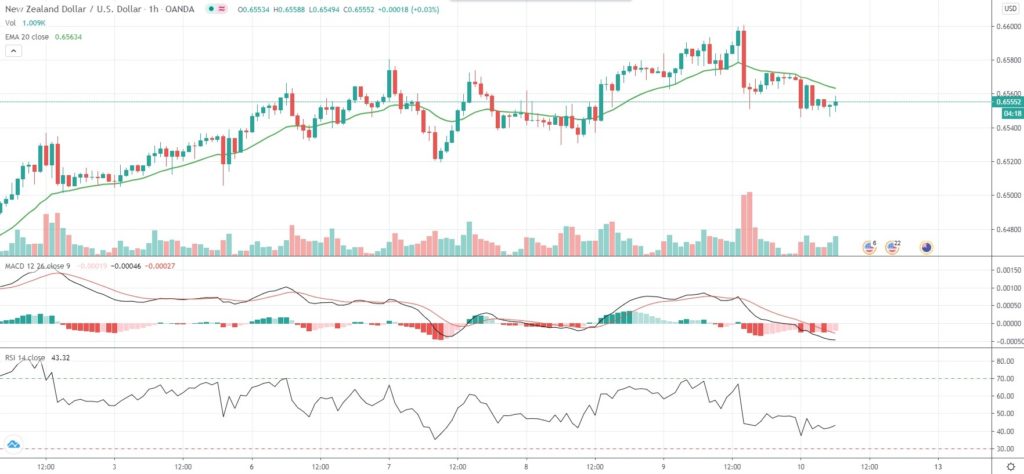NZD/USD eased from Thursday’s 5 1/2-month high and traded within a tight range in early European session on Friday, as the intensifying spread of the coronavirus across the United States further dampened optimism over a swift economic recovery, fueling demand for safe haven currencies such as the greenback.
The latest data showed new confirmed COVID-19 cases in the United States had risen by more than 60,000, or the largest count in a single day registered by any country since the start of the pandemic. As a result, the US Dollar Index (DXY) rebounded from an almost one-month low on Thursday and was last up 0.13% to 96.90.
Yesterday’s report by the US Labor Department showed the number of Americans filling for unemployment assistance had eased to 1.314 million during the business week ended July 3rd, or the lowest number of claims in nearly four months. Still, however, the outlook remains highly uncertain, as the surge in new COVID-19 infections forced a number of US states to scale back or postpone economic reopening, while many businesses announced job reductions and furloughs. The total number of jobless claims reported since March 21st rose to 50.0 million.
“Although we have seen improvements in economic data, people are beginning to think that is just a natural outcome of economic reopenings. Now they are starting to worry more about increasing infections,” Minori Uchida, chief currency strategist at MUFG Bank, said.
As of 6:50 GMT on Friday NZD/USD was edging down 0.21% to trade at 0.6556, while moving within a daily range of 0.6547-0.6573. Yesterday the major pair climbed as high as 0.6601, or its strongest level since January 27th (0.6607). NZD/USD has pared gains for the current week, now being up 0.33%.
In terms of economic calendar, at 12:30 GMT today the US Bureau of Labor Statistics is to report on the Producer Price Index performance. Annual producer prices probably dropped 0.2% in June, according to market expectations, following a 0.8% slump in May.
Meanwhile, the nation’s annualized core producer price inflation, which excludes prices of food and energy, probably accelerated to 0.4% in June from 0.3% in May.
Bond Yield Spread
The spread between 1-year New Zealand and 1-year US bond yields, which reflects the flow of funds in a short term, equaled 9.7 basis points (0.097%) as of 6:15 GMT on Friday, or unchanged compared to July 9th.
Daily Pivot Levels (traditional method of calculation)
Central Pivot – 0.6574
R1 – 0.6596
R2 – 0.6623
R3 – 0.6646
R4 – 0.6668
S1 – 0.6547
S2 – 0.6525
S3 – 0.6498
S4 – 0.6472






